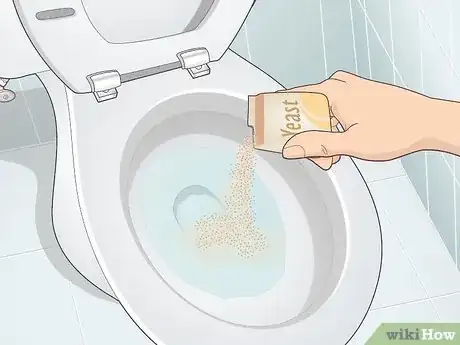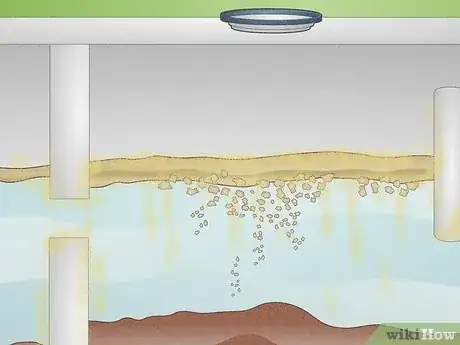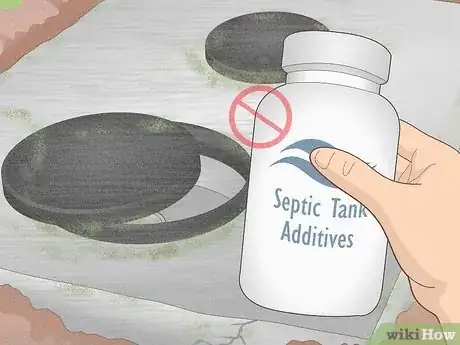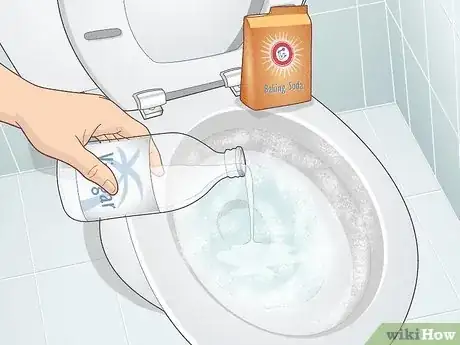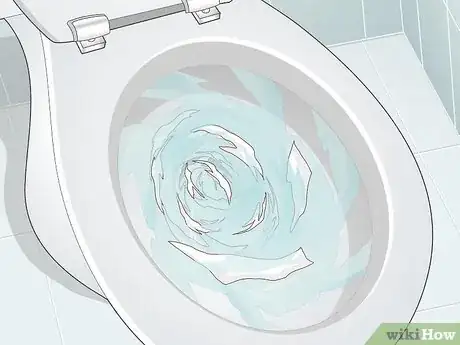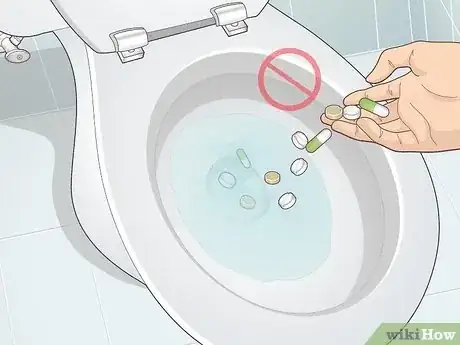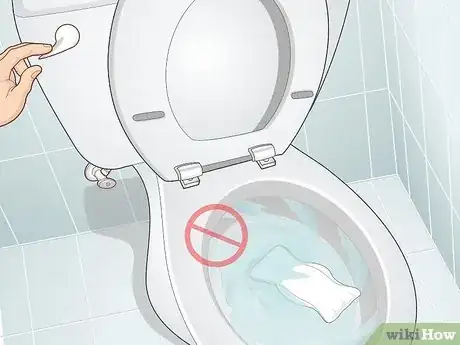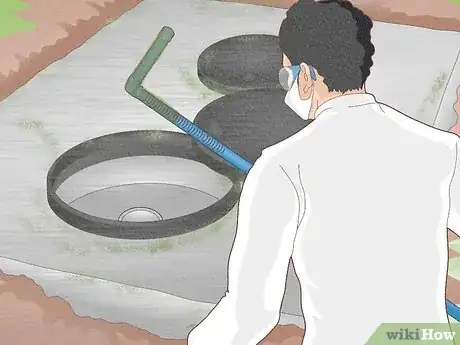This article was co-authored by wikiHow staff writer, Hannah Madden. Hannah Madden is a writer, editor, and artist currently living in Portland, Oregon. In 2018, she graduated from Portland State University with a B.S. in Environmental Studies. Hannah enjoys writing articles about conservation, sustainability, and eco-friendly products. When she isn’t writing, you can find Hannah working on hand embroidery projects and listening to music.
This article has been viewed 3,417 times.
Learn more...
When you hear the word “bacteria,” you probably think of the gross germs that get on your hands and make you sick. But actually, bacteria are an essential part of a septic tank system: they help break down solid waste to keep your septic line working perfectly. But if you’re worried about your bacteria levels, you’re not alone—many septic tank owners look for ways to boost their bacteria levels at home to keep their tanks from filling up too fast. In this article, we’ll share some natural ways you can increase the bacteria in your septic tank with organic products you may already own.
Things You Should Know
- Flush 1/4 oz of yeast down the toilet every month to naturally boost bacteria.
- Or, push 3 to 4 rotten tomatoes down the garbage disposal every 4 months.
- Use natural cleaning products and natural soap to avoid killing the good bacteria in your septic tank.
- Don’t flush non-flushable items down the toilet, like medication, menstrual products, or wipes.
Steps
Natural Methods
-
1Yeast Yeast promotes bacteria and can help bring healthy enzymes to your septic tank. Once a month, flush a 1/4 oz. packet of yeast down the toilet to boost your bacterial activity.[1] X Research source
- Yeast is an awesome natural solution, but don’t use it more than once a month. Yeast can make your septic tank frothy if you use too much, which could cause it to back up.
-
2Rotten tomatoes Going to toss those old, rotten tomatoes from the back of your pantry? Hold on a minute! Every 4 months, grab those old tomatoes and push them down the garbage disposal. The decaying tomatoes will bring healthy bacteria into the septic tank super fast.[2] X Research source
- Use 3 to 4 rotten tomatoes at a time.
Why is bacteria important?
-
Bacteria helps break down solid waste inside of the septic tank. Without any bacteria in your septic tank, all your solid waste would remain, well… solid. Since solids take up more room than liquid waste, too many solids in your septic tank can cause it to fill up faster. Healthy bacteria breaks down those solids to keep your septic tank functioning at an optimal level for longer.[3] X Research source
Septic Tank Additives
-
Septic tank additives are not necessary for a septic tank system. Currently, the Environmental Protection Agency (EPA) does not recommend using any chemical additives in your septic tank. While they are often promoted for domestic septic tank systems, most systems do not need any additives to function properly. Using septic tank additives can decrease the performance of septic drainfields, and the strong chemicals in them pose a threat to the groundwater and soil structure around your home.[4] X Trustworthy Source United States Environmental Protection Agency Independent U.S. government agency responsible for promoting safe environmental practices Go to source
Household Habits
-
1Use natural cleaning products. Cleaning products that contain bleach are designed to kill bacteria, and that includes the bacteria in your septic tank. Whenever you’re cleaning your toilets or sinks, try using white vinegar and baking soda as a natural alternative to preserve the bacteria in your tank.[5] X Research source
- You can also use salt, lemons, and olive oil to naturally clean your home.
-
2Switch to natural soap. Using antibacterial soap may sound like a good way to keep your hands clean, but it’s in the name: antibacterial soap kills bacteria. Try using natural soap to preserve the good bacteria in your septic tank.[6] X Research source
-
3Use toilet-friendly toilet paper. Some dyes in toilet paper are tough for bacteria to break down. Make sure you’re buying white toilet paper that breaks down easily so your septic tank doesn’t have to work harder than it needs to.[7] X Research source
- Not sure if your toilet paper is toilet-friendly? Place a square of toilet paper in a jar full of water, then shake the jar up. If the toilet paper breaks down into small bits, then it’s good for your system. If not, it’s time to find a new brand.
-
4Dispose of medicine properly. Flushing prescription medication down the toilet can kill the bacteria in your septic tank (especially if you flush antibiotics). If you have old medication that’s expired or you don’t use anymore, dispose of it the right way by taking it to a hazardous waste facility.[8] X Research source
-
5Don’t flush non-flushable items down the toilet. Non-compostable materials are very hard for the bacteria in your tank to break down. Don’t flush things like wipes, menstrual products, or diapers down the toilet; not only will they probably clog your pipes, but they’ll wreck the bacteria in your septic tank, too.[9] X Research source
- Even most “flushable” wipes aren’t made to go into a septic tank system. When in doubt, throw it out.
-
6Avoid pouring grease or fat down the drain. Not only will grease and fat likely clog your pipes, but they also add an unnecessary amount of solid waste to your septic tank. Always dispose of grease by pouring it into an airtight container and then throwing it in the trash.[10] X Trustworthy Source United States Environmental Protection Agency Independent U.S. government agency responsible for promoting safe environmental practices Go to source
-
7Get routine inspections. Septic tank systems generally need to be inspected once every 1 to 3 years. Call your septic service provider and have them come out and take a look at your system every few years to make sure it’s all in working order.[11] X Trustworthy Source United States Environmental Protection Agency Independent U.S. government agency responsible for promoting safe environmental practices Go to source
- Most septic tank systems need to be emptied every 3 to 5 years.
You Might Also Like

 How to Get Spray Foam off Your Hands
How to Get Spray Foam off Your Hands






 How to Defrost a Samsung Ice Maker: A Quick Guide
How to Defrost a Samsung Ice Maker: A Quick Guide



References
- ↑ https://septictankpro.com/how-to-increase-bacteria-in-a-septic-tank/
- ↑ https://septictankpro.com/how-to-increase-bacteria-in-a-septic-tank/
- ↑ https://www.lrdhu.com/documents/HOMEMGTIDEASArial6-10.pdf
- ↑ https://www.epa.gov/septic/frequent-questions-septic-systems
- ↑ https://septictankpro.com/how-to-increase-bacteria-in-a-septic-tank/
- ↑ https://septictankpro.com/how-to-increase-bacteria-in-a-septic-tank/
- ↑ https://www.lrdhu.com/documents/HOMEMGTIDEASArial6-10.pdf
- ↑ https://www.lrdhu.com/documents/HOMEMGTIDEASArial6-10.pdf
- ↑ https://www.lrdhu.com/documents/HOMEMGTIDEASArial6-10.pdf
About This Article

